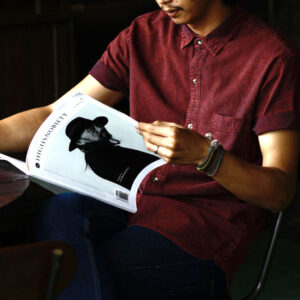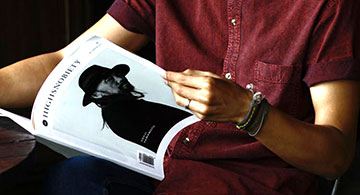A few months ago, one of the YouTube channels I follow released a 12 – part online course series on media literacy; which they aptly named “Crash Course: Media Literacy”. I found it informative and entertaining. I also feel great knowing that being connected to the internet makes accessing information easier. This prompted an opportunity to reflect on how much – or in some cases how little – access to various forms of media I had growing up and then upon moving to Canada.
 Living in a rural mining village with the typical 90’s antenna TV, most households like ours would get access to the major TV stations and some smaller ones. When my parents were still alive, we had a routine of having dinner while watching whatever was on TV at 7 PM. A lot of times, it would be an episode of an anime, followed by a telenovela. Whoever is at home at 6 PM gets to watch the news. Watching TV on the weekends gave usa chance to see shows from other countries like ‘The Simpsons’. Most advertising is on the radio and TV, with different strategies to entice viewers, from catchy dialogues like “Naku germs! Hindi ah!”, to having a brand persona like “Lumen and her family” for a laundry detergent.
Living in a rural mining village with the typical 90’s antenna TV, most households like ours would get access to the major TV stations and some smaller ones. When my parents were still alive, we had a routine of having dinner while watching whatever was on TV at 7 PM. A lot of times, it would be an episode of an anime, followed by a telenovela. Whoever is at home at 6 PM gets to watch the news. Watching TV on the weekends gave usa chance to see shows from other countries like ‘The Simpsons’. Most advertising is on the radio and TV, with different strategies to entice viewers, from catchy dialogues like “Naku germs! Hindi ah!”, to having a brand persona like “Lumen and her family” for a laundry detergent.
In elementary school, we had a monthly magazine subscription that covered a combination of history, current events and geography articles for our HEKASI (aka Social Studies) class. We were sometimes asked to bring the local newspaper to class for us to look through. I would say this is how I started gaining awareness about political affairs and world news.
I remember visiting the home of a wealthier classmate, who had subscription to cable TV. That was the first time I was enamoured by the stunning visuals from National Geographic and the Discovery Channel. Soon after, whenever my legal guardian let me stay in his house, I would watch shows from these channels with my cousins. I learned how cable TV provided a greater variety of shows on many topics – from robots, to sea animals, and to travelling to other places.
In 2004, in my small sari-sari store in the village, my TV broke and it was soon followed by my radio. I didn’t know anyone who can fix it, so I didn’t have access to media for about a year and a half. When I moved to the city to finish high school, my media exposure accelerated with having to use the internet for school, along with having the TV turned on almost all of time in the house.
Fast forward to Canada in 2007, I had access to a home computer all the time, got my first laptop in 2009, then my first touch screen smartphone in 2010. After my brother arrived in Canada in 2011,for the first time, our household had to come up with rules and restrictions in an attempt to control how much time our teenager spends on the internet.
It’s fascinating and overwhelming dealing with the volume, as well frequency of these messages and images that compete for attention. The intensity expressed by the tone and graphics, or inflammatory headlines can cause distress and misinformation. It is also just as important, and just as challenging having to take time to filter what is relevant, what is complete, and what is true.
On a personal level, I observe how my friends and relatives share parts of their lives online. I wonder how my young relatives will react years from now after finding out their baby photos were published online by their parents. It’s interesting how people argue their viewpoints about politics and social issues and share information about topics that matter to them the most.
The online course I watched also mentioned that with the fast pace of technology these days, it has made our world more interconnected and more divided at the same time and is more public about what used to be private. The world of algorithms and artificial intelligence is completely new territory and will impact how we access, process and act on the information we receive. It sounds like these days, on top of financial literacy and emotional intelligence, the skill of media literacy is a valuable life skill to have. For many, being more connected to people from everywhere and being more aware of events and information at a much faster pace is now part of regular life.


